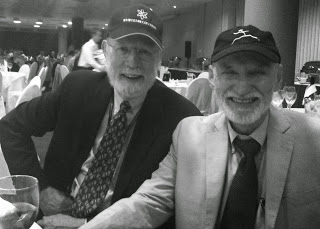Lean double header all-star session
Each summer, I particpate as a faculty member in an executive education short program at MIT called “Technology, Organizations, and Innovation: Putting Ideas to Work.” We spend several engaging days with students from around the world. They represent a wide range of industries.From the course summary:Innovation typically begins with a new technical concept or other bright idea. But the idea is just the first step on the long path to successful innovation. Technical change usually requires organizational changes as well. These changes include providing resources for technical development and acquiring the support of others in the organization or in outside organizations. Gaining this support requires negotiation, bargaining, and coalition building. Organizational change, then, is a very complex process. Change of this sort can be

Each summer, I particpate as a faculty member in an executive education short program at MIT called “Technology, Organizations, and Innovation: Putting Ideas to Work.” We spend several engaging days with students from around the world. They represent a wide range of industries.
From the course summary:
Innovation typically begins with a new technical concept or other bright idea. But the idea is just the first step on the long path to successful innovation. Technical change usually requires organizational changes as well. These changes include providing resources for technical development and acquiring the support of others in the organization or in outside organizations. Gaining this support requires negotiation, bargaining, and coalition building. Organizational change, then, is a very complex process. Change of this sort can be very difficult. Significant innovations can be resisted, fall victim to competing ideas, or fail to be sustained.
Thus innovators need their original idea and a vision of how the world will change if the innovation succeeds. The real bottleneck in achieving success is the organizational change needed for implementing that idea. This course focuses on strategies to overcome the bottlenecks: how to build the needed coalition of supporters who will enable the necessary organizational change. This change process is not captured by simple cookbook procedures, so we will investigate a variety of detailed, original case studies, rich in lessons for innovation success and failure. The cases are drawn from many sectors, public and private, from the U.S. and other countries. We will also explore the diversity of innovation experiences of the class participants.
Lean is always part of our agenda, and this year there is a Lean double header all-star session, with Jim Womack and John Shook presenting together. It isn’t often that you get to hear from and interact with the two most famous and influential Lean adherents in the world, and this should be a treat!
There will also be a visit to the Cambridge Innovation Center, a hotbed of start-ups in Kendall Square.
There are still some openings for the course, which runs from June 22 to 26.
SOURCE: Not Running a Hospital – Read entire story here.









